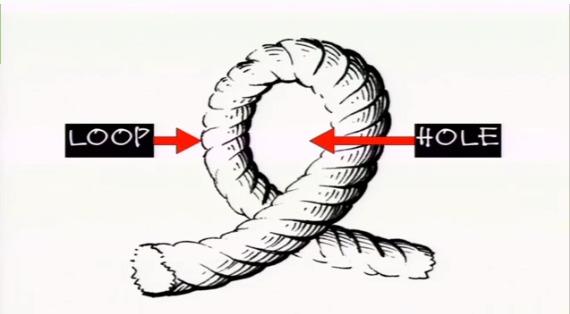SUGAR BY ANY OTHER NAME IS JUST AS FATTENING!
(With apologies to ol' Willie Shakespeare, Romeo and Juliet)

Mary Poppins sang that a spoonful of sugar helped the medicine go down, but it might as well have been agave syrup, date paste or cane juice, because in addition to those little white crystals in a bowl on your table, sugars come in many forms.
Since most forms of sugars are very similar chemically, switching from one kind to another generally won't make a very big difference in terms of your overall health: they are still all calorie energy. The key is to cut back on sweet treats in general. It's conservatively estimated that 75 percent of packaged foods sold in the U.S. contain some sort of added sugar(s), whether or not they are called sugar (more on this in a minute) but you have to read the label to find it.
And if you see a sweetener listed as one of the first three ingredients in any pre-prepared or packaged food, it likely contains a SIGNIFICANT amount of added sugar. But, there is even a legal way to skirt THAT requirements through “creatively” listing the ingredients on the Nutrition Panel.

Let’s assume that our particular mythical food is made of 51% sweeteners. If only one sweetener is used, it MUST be listed first since it constitutes 51% of the ingredients by weight. But, if the sweeteners were divided amongst five differently named sugar equivalents, here is what the label could look like:
Ingredients:
Flour 18%, egg solids 16%, milk 14%, sorghum 13%, date paste 11%,
maltodextrin 10%, HFCS 9%, sugar 8%, flavorings 1%.
(Labels don’t typically list the percentage of each ingredient, but I’ll do it for clarity of the example.)
Wow, you might think! This must be a health food! Sugar is second from the bottom! Awesome! But, if you total ALL the sweetening ingredients- sorghum, date paste, maltodextrin, HFCS and sugar- then you see that our mythical food is really 51% sugar and sweetener equivalents! Without this loophole in nutrition labelling, the ingredients should read: Sweeteners 51%, flour, 18%, egg solids 16%, milk 14%, flavorings 1%.
Nearly half of added sugars that people consume are in the form of sweetened beverages, especially soft drinks, but also including fruit drinks, coffee, tea, sports and energy drinks, rehydrating drinks, flavored waters, and many more. Other major sources of added sugars include snacks and sweets such as candy, ice cream, cookies, granola bars, flavored yogurts, cake, doughnuts, and even protein bars (yes, folks, those dates and raisins pack a high caloric punch). People also get a significant amount of added sugars from less obvious sources, such as pasta sauces, breakfast cereals, breads, dressings, ketchup, barbecue sauces, baked beans, and many others. Nutella, for example- promoted as having just a few ingredients, and all natural- is made of 58% sugars!
So, how do you spot hidden sugars in Packaged Foods?

So, what is biggest problem in spotting hidden sugar? The fact that sugar isn’t always spelled S-U-G-A-R. Added sugars hide behind a multitude of names on package labels, but the body metabolizes them (or stores them as extra calories) all in essentially the same way.
So, here are 74 (YES! 74! ) sugars and sweetener equivalents
to look for on the ingredient lists:

SUGARS
Granulated sugar
Caster sugar (British sugar, sometimes mistakenly spelled castor)
Confectioner’s sugar
Powdered sugar
Brown sugar
Beet sugar
Raw sugar
Icing sugar
Invert sugar
Cane sugar
Sugar cane
Yellow sugar

OTHER NAMES FOR SUGARS AND SUGAR EXTRACTS
Barley malt
Diastatic malt
Ethyl maltol
Maltodextrin
Cane juice
Cane juice crystals
Florida crystals
Evaporated cane juice
Caramel
Corn sweetener
Corn sweetener solids
Fruit juice
Fruit juice concentrate
Grape sugar
Honey
Molasses
Refined molasses
Blackstrap molasses
Coconut sugar (sucrose, glucose, fructose)
Date sugar (sucrose)
Date paste
Raisin paste
NECTARS
Agave nectar (about 80% fructose, 20% glucose)
Peach nectar
Pear nectar
Fruit nectar

SYRUPS
Corn syrup
High fructose corn syrup (typically HFCS 55)
HFCS 55 (55% fructose, 45% glucose, so, similar to sucrose)
HFCS 90 (90% fructose, 10% glucose)
Inverted sugar syrup
Carob syrup
Karo syrup
Maple syrup
Malt syrup
Brown rice syrup
Rice syrup
Rice malt syrup
Refiner’s syrup
Buttered syrup
Sugar cane syrup/juice)
SWEETENERS ENDING IN “-OSE” (WHICH ARE ALWAYS SUGARS)
Glucose (a monosaccharide, the simplest sugar)
Dextrose (another name for glucose)
Mannose (related to glucose)
Pyranose (type of mannose)
Furanose (type of mannose)
D-ribose (a monosaccharide)
Fructose (a monosaccharide, fruit sugar)
Galactose (a monosaccharide, component of milk sugar)
Sucrose (a disaccharide containing both glucose and fructose)
Maltose (a disaccharide of two units if glucose, malt sugar)
Lactose (a disaccharide of glucose and galactose, milk saccharose, or mannose)

FOREIGN AND UNUSUAL NAMES FOR SUGARS
Demerara (partially refined light brown sugar)
Muscovado (partially refined, very dark brown sugar)
Panela (unrefined whole cane sugar)
Rapadura (unrefined whole cane sugar)
Panocha/penuche (caramelized brown or unrefined sugar)
Sweet sorghum
Sorghum (similar to millet)
Sucanat (unrefined dried sugar cane crystals)
Treacle (British golden syrup or British molasses)
Turbinado sugar (minimally refined light-medium brown sugar)
And this list is by no means inclusive. Most notably absent are “alcohol sugars” such as xylitol which DO have a caloric value (7 per gram) but are metabolized differently by the body and typically don’t promote tooth decay.

The American Heart Association recommends woman and children limit intake of added sugars to 2 tablespoons or less a day, and men aim for less than 3 tablespoons per day. Nutrition panels on the foods, however, list sugar content in grams. I’ll do the math for you. Since carbohydrates contain about 4 calories per gram, women and children should have less than 96 calories of added sugar daily, and men should have less than 144 calories worth of the added sweet stuff.

So, do your homework BEFORE you shop, keep your eyes open for hidden sugars WHEN you shop, and exercise restraint eating those sweeteners AFTER you shop. We want you to be GaG-ing for a long time!
 Holidays
Holidays  Girl's Behavior
Girl's Behavior  Guy's Behavior
Guy's Behavior  Flirting
Flirting  Dating
Dating  Relationships
Relationships  Fashion & Beauty
Fashion & Beauty  Health & Fitness
Health & Fitness  Marriage & Weddings
Marriage & Weddings  Shopping & Gifts
Shopping & Gifts  Technology & Internet
Technology & Internet  Break Up & Divorce
Break Up & Divorce  Education & Career
Education & Career  Entertainment & Arts
Entertainment & Arts  Family & Friends
Family & Friends  Food & Beverage
Food & Beverage  Hobbies & Leisure
Hobbies & Leisure  Other
Other  Religion & Spirituality
Religion & Spirituality  Society & Politics
Society & Politics  Sports
Sports  Travel
Travel  Trending & News
Trending & News
Most Helpful Opinions